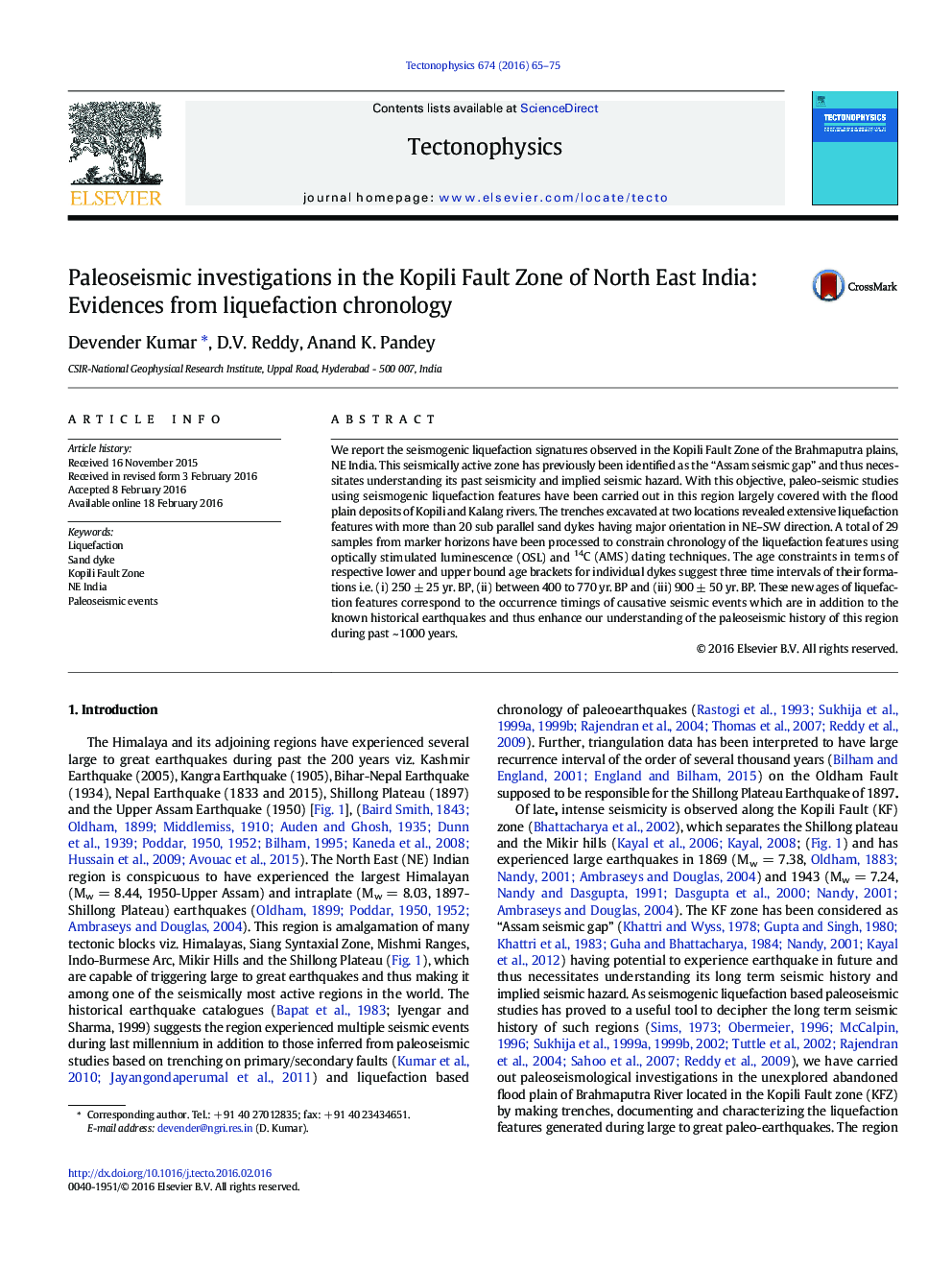| کد مقاله | کد نشریه | سال انتشار | مقاله انگلیسی | نسخه تمام متن |
|---|---|---|---|---|
| 6433467 | 1636723 | 2016 | 11 صفحه PDF | دانلود رایگان |
- First report of seismogenic liquefaction signatures from the Kopili Fault Zone (KFZ) in Brahmaputra plains of NE India.
- The liquefaction chronology and paleoseismic events for the region are inferred from OSL and 14C dating of more than one and a half dozen liquefaction features.
- The time constraints on liquefaction features extending to past ~ 1000 years suggest occurrence of three large to great seismic events viz. (i) 250 ± 25 yr. BP, (ii) between 400 to 770 yr. BP and (iii) 900 ± 50 yr. BP, in addition to the known historical earthquakes of 1869 and 1943 in this region.
We report the seismogenic liquefaction signatures observed in the Kopili Fault Zone of the Brahmaputra plains, NE India. This seismically active zone has previously been identified as the “Assam seismic gap” and thus necessitates understanding its past seismicity and implied seismic hazard. With this objective, paleo-seismic studies using seismogenic liquefaction features have been carried out in this region largely covered with the flood plain deposits of Kopili and Kalang rivers. The trenches excavated at two locations revealed extensive liquefaction features with more than 20 sub parallel sand dykes having major orientation in NE-SW direction. A total of 29 samples from marker horizons have been processed to constrain chronology of the liquefaction features using optically stimulated luminescence (OSL) and 14C (AMS) dating techniques. The age constraints in terms of respective lower and upper bound age brackets for individual dykes suggest three time intervals of their formations i.e. (i) 250 ± 25 yr. BP, (ii) between 400 to 770 yr. BP and (iii) 900 ± 50 yr. BP. These new ages of liquefaction features correspond to the occurrence timings of causative seismic events which are in addition to the known historical earthquakes and thus enhance our understanding of the paleoseismic history of this region during past ~ 1000 years.
Journal: Tectonophysics - Volume 674, 2 April 2016, Pages 65-75
